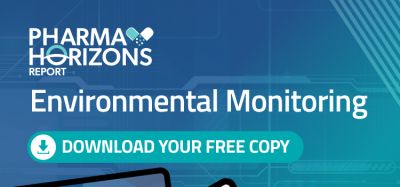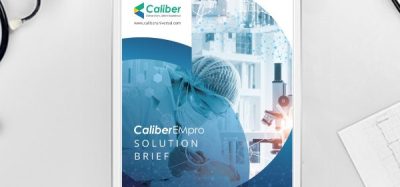ICHQ2(R1) Validation of Analytical Procedures – Challenges and Opportunities
Posted: 20 August 2013 | David Elder (JPAG member and consultant) | No comments yet
The International Conference on Harmonisation (ICH) guideline for the Validation of Analytical Procedures (ICHQ2(R1)) currently covers validation procedures for the four most common analytical tests: identification tests, quantitative tests for impurities, limit tests for the control of impurities and quantitative tests for the active moiety(ies) in APIs (active pharmaceutical ingredients) or drug products.
The key underlying concepts and strategies are equally applicable to other analytical methodologies; e.g. particle size analysis, dissolution, etc. Typical validation parameters covered in the guideline include accuracy, precision, specificity, detection limits (DL / LOD) and quantitation limits (QL / LOQ), linearity, range and robustness.
The guidance covers typical criteria for revalidation, including changes in API synthesis, changes in the composition of drug product or changes in the analytical procedure. However, the guidance is silent with respect to the requirements for method validation during clinical trial development, the expectations for analytical method technology transfer (TT) and with respect to validation of extremely sensitive and sophisticated methods, e.g. trace analysis of genotoxic impurities. Consequently, there is often regulatory confusion with respect to applicability of the ICHQ2(R1) guidelines in these areas.
There are surprisingly few publications on the attributable causes for non-robust analytical methodologies and yet this is a commonly reported deficiency by regulatory agencies across the globe. The EMA1 recently indicated that, ‘During inspections, GMP inspectors have noted that the root causes for out-of-specification (OOS) results are sometimes attributed to a lack of test method validation in the context of transfer of analytical methods. Such situations also occur frequently at contract Quality Control laboratories.’ Therefore, despite these methods being fully validated according to ICHQ2(R1), they are still found to be non-robust during routine QC testing; i.e. not fit for purpose.
Molnár2 attributed these issues to that fact that ICHQ2(R1) was a statistically based guideline with limited focus on the resultant chromatography, particularly critical resolutions. He indicated that most methods are critically dependent on a number of key parameters, e.g. pH, stationary phase (type and batch), temperature, mobile phase, buffer concentration, etc and in a global economy, it is often difficult to try and address all of this potential variability within the existing robustness assessment contained within ICHQ2(R1). He articulated that, ‘Therefore, today, we need HPLC methods, which are adjustable from location to location to perform the analytical goal of correct quantitation of the product components.’ This is obviously only possible if the methods are developed allowing adjustments between certain clearly defined limits (termed ‘maps of critical resolution’). his is the forerunner to applying Quality by Design (QbD) in the development of methods and as long as the parameters reside within pre-defined ‘proven acceptable ranges (PARs)’, these parameters can be modified to get the optimal resolution of key impurities (which again are pre-defined).
A recent example of this QbD approach was reported by Schmidt and Molnár3 for the development and validation of a UPLC method for a second generation anti-histamine (ebastine) in API and drug product. The authors utilised chromatography modelling software (DryLab 4) to develop a Design Space, as per ICH Q8, for the method, which they described as ‘a region in which changes to method parameters will not significantly affect the results.’ They then verified that the Design Space was accurate with a relative error of prediction (REP) of only 0.06 per cent. The method was fully validated as per ICHQ2(R1). Specificity, including baseline resolution for all impurity peaks could be achieved in four minutes. This represents a significant enhancement in productivity (40-fold), versus the established Ph.Eur. method, allowing an increased sample throughput of 360 samples/day.
The robustness of the method was assessed by varying six critical parameters (+1, 0, -1); temp – erature, ternary composition of the mobile phase, flow rate, gradient time and initial and final concentration of the mobile phase composition. The resultant 729 experiments were statistically modelled from the established Design Space and demonstrated that the critical resolution factor of 2.0 can be achieved in all cases.
Additionally, in order to address the robustness issue, some practioners across the industry have also advocated the use of pre-defined rugged stationary phases (rather than random choice), and by first intent only developing methods using these columns.
References
- Concept paper on the revision of chapter 6 of the EU GMP Guide Quality Control, 12th October 2010, EMA/INS/GMP/632654/2010 http://www.ema.europa.eu/docs/en_GB/document_library…
Assessed on 7th May 2013 - I.Molnár. Searching for robust HPLC methods – Csaba Horvarth and the Solvophobic theory, Chromatographia, 62 (2005) S7-S17
- A.H.Scmidt, I.Molnár. Using an innovative Qualityby-Design approach for the development of a stability indicating UPLC method for ebastine in the API and pharmaceutical formulations, J. Pharm. Biomed. Anal., 78-79 (2013) 65-74
Issue
Related topics
Good Manufacturing Practice (GMP), ICH guidelines, Quality by Design (QbD)








